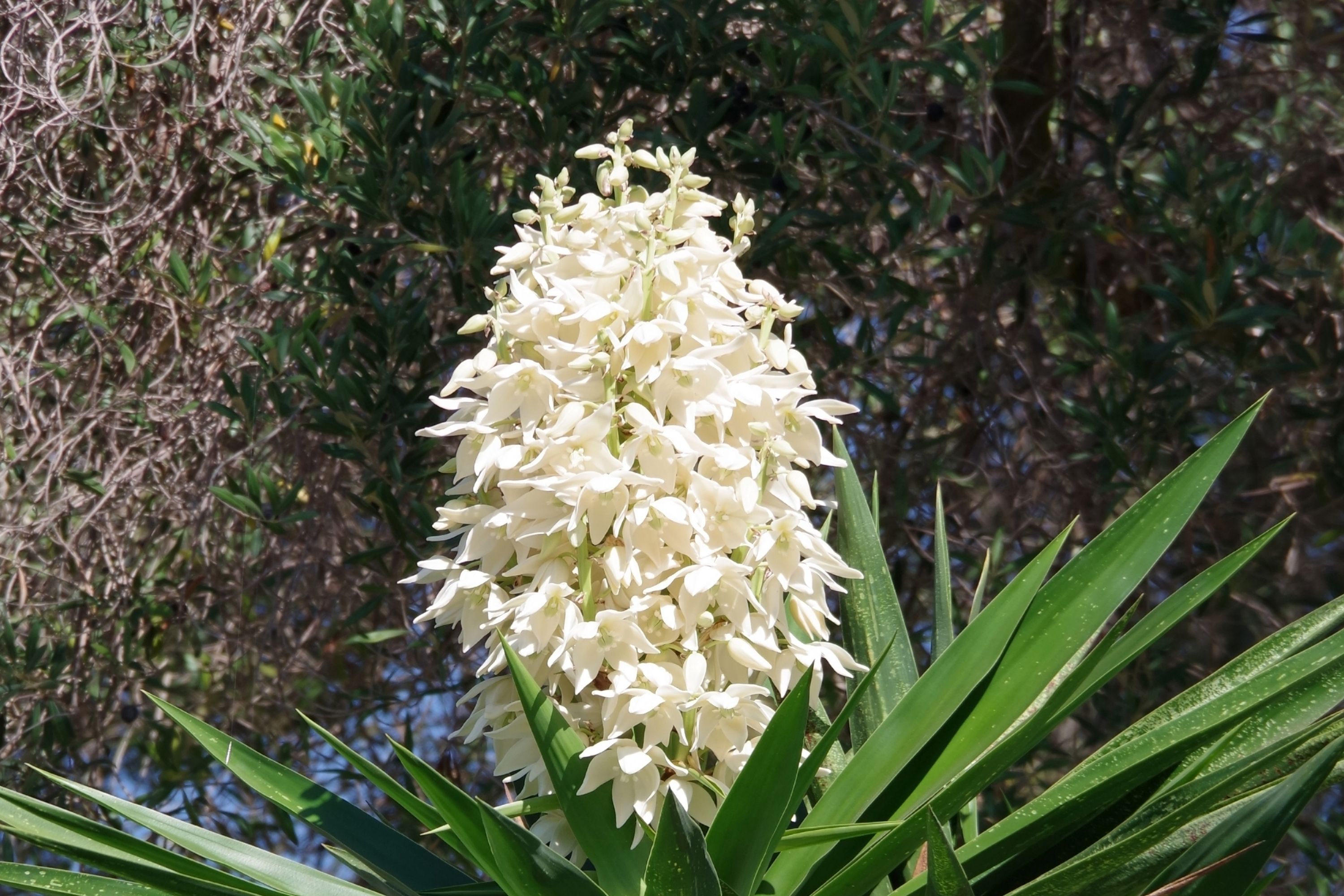Faxon yucca
(Yucca faxoniana)

Description
Yucca faxoniana is a bladed evergreen shrub of the genus Yucca. It is known by the common names Faxon yucca, Spanish dagger, and giant dagger. The plant generally is a multitrunked shrub 3–10 feet (0.91–3.05 m) in height. They can be single trunked and tree-like to 20 feet (6.1 m) tall. The bladed leaves range from 2 to 4.5 feet (0.6 to 1.4 m) in length. The flowers, ivory to creamy white and bell shaped, are on a flower head up to 2 feet (0.6 m) long. Flowers, pollinated by moths of the genus Tegeticula, bloom typically in April. The plant produces sweet, pulpy, oblong fruits. The species has been called Yucca torreyi – a name given in 1908 by John Shafer. The epithet commemorates John Torrey, a 19th-century American botanist who designated this as a new variety in 1859. Y. torreyi is now regarded as an illegitimate name; however sources differ as to the correct name, using either Yucca treculeana Carrière or Y. faxoniana. Yucca faxoniana is native to the Chihuahuan Desert region of northern Mexico, southern New Mexico, and southwestern Texas. Its range is centered around Big Bend National Park in the central Rio Grande valley in the Chihuahuan Desert. It is found mainly in the Mexican states of Chihuahua and Coahuila, but also minor locales of Durango and Nuevo León. It does not occur in the upper Rio Grande Basin section in central New Mexico, nor the lower third of the Rio Grande Valley towards the Gulf of Mexico. Native Americans used the fruit as a food source raw, roasted, or dried and ground into meal. They also used the plant leaves as a fiber in basketry, cloth, mats, ropes, and sandals. The roots were used as a red pattern element in Apache baskets. Yucca is a genus of perennial shrubs and trees in the family Asparagaceae, subfamily Agavoideae. Its 40–50 species are notable for their rosettes of evergreen, tough, sword-shaped leaves and large terminal panicles of white or whitish flowers. They are native to the hot and dry (arid) parts of the Americas and the Caribbean. Early reports of the species were confused with the cassava (Manihot esculenta). Consequently, Linnaeus mistakenly derived the generic name from the Taíno word for the latter, yuca. The Aztecs living in Mexico since before the Spanish arrival, in Nahuatl, call the local yucca species (Yucca gigantea) iczotl, which gave the Spanish izote. Izote is also used for Yucca filifera.
Taxonomic tree:







